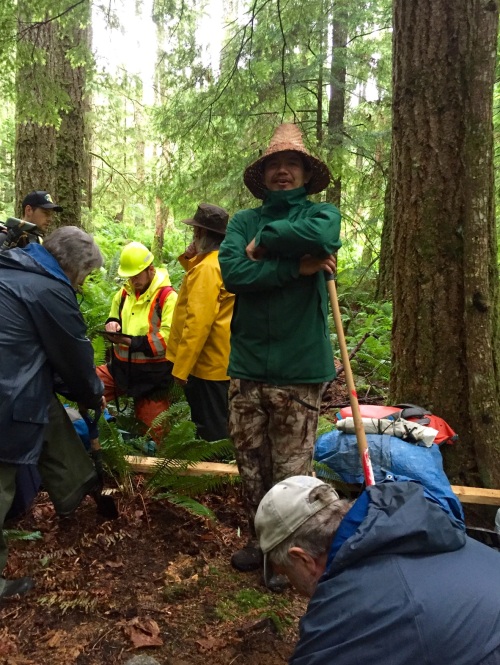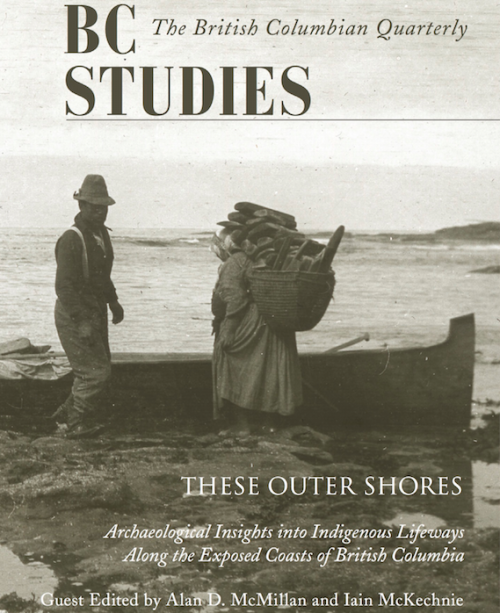
Footprint (left) enhanced in purple right from the intertidal zone excavations at Calvert Island. Photo and enhancement: Joanne McSporran
This months Archaeological Society of BC monthly lecture in Victoria should be excellent. Sorry for the short notice but it is tomorrow, Tuesday 18th, at 7.30, at UVIC. Details below or on this PDF. It is free and open to the public.
Hakai Institute Scholar and UVIC Anthropology Assistant Professor Dr. Duncan McLaren will be outlining some of the incredible finds from his Hakai Ancient Landscapes Archaeological Project (HALAP). Duncan set out to find early period sites on an area of the coast with relatively little long-term sea level change, following on from his highly successful UVIC dissertation research in the Dundas Group. The area chosen for the new project was the Hakai Pass / Northern Calvert Island area, not far from the well-known archaeological site of Namu. Duncan will present some of his results, including newly investigated sites with more than 11,000 years of continuous occupation, intriguing lithic and other finds from the intertidal zone, and most intriguingly perhaps, a series of footprints from the intertidal zone which may well be terminal Pleistocene in age – perhaps more than 13,000 years old.
The research was carried out under the generous funding of the Hakai Institute and their Calvert Island research station, and with the active participation of the Heiltsuk and Wuikinuxv First Nations.
Details: Tuesday, Oct 18th , 7:30, Cornett B129, UVic Campus, Victoria. Map.

Duncan takes notes while Daryl Fedje works in the intertidal zone at the footprints site. Photo credit: Joanne McSporran










 The regional journal BC Studies has a
The regional journal BC Studies has a 
